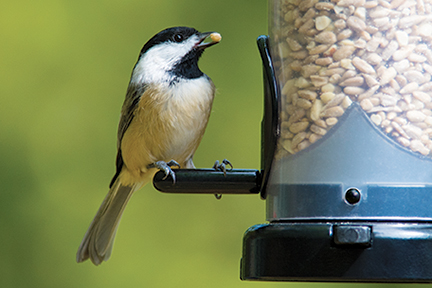BIRD OF THE MONTH: LAZULI BUNTING
The Lazuli Bunting is named after the gemstone lapis lazuli, a rare semi-precious stone that is azure blue. These beautifully colored small songbirds are common visitors in the summer throughout the American west.
Lazuli Buntings can be found in wooded and bushy areas, sagebrush, open scrub, thickets, hedges, along agricutural fields and in residential gardens. Singing males are often found high in the tree tops.
Lazuli Buntings eat seeds, fruit and insects. They glean insects off foliage in trees and shrubs, hop on the ground eating seeds and often perch on stems of grasses and other plants removing seeds with their bills.
These birds will also flycatch for insects and have been known to visit feeders especially if sunflower chips or white proso millet is being offered.
A Lazuli Bunting nest is made of coarse grass, rootlets, strips of bark and leaves. It is lined with fine grass, rootlets and animal hair and placed in a shrub 2 - 4 feet above the ground.
The female Lazuli Bunting lays 1 - 6 plain pale blue-white or green-blue eggs. One pair may raise 2 - 3 broods in one year.
The sweet song of the Lazuli Bunting is a high rapid strident warble.
Each male Lazuli Bunting two years of age and older sings only one song composed of a series of different syllables and unique to that individual. Yearling males generally arrive on the breeding grounds without a song of their own. Shortly after arriving, a young male develops its own song which can be a novel rearrangement of syllables, combinations of song fragments of several males or a copy of the song of one particular older male.
Song copying by young male Lazuli Buntings can produce song "neighborhoods" in which songs of neighboring males are similar.
The Lazuli Bunting has a unique pattern of molt and migration. Individuals begin their "pre-molt" during late summer on the breeding grounds. They then interrupt this molt and migrate to one of two known molting "hotspots": southern Arizona and New Mexico and northern Sonora or the southern tip of Baja California where they finish molting before continuing their migration to wintering grounds in western Mexico.

